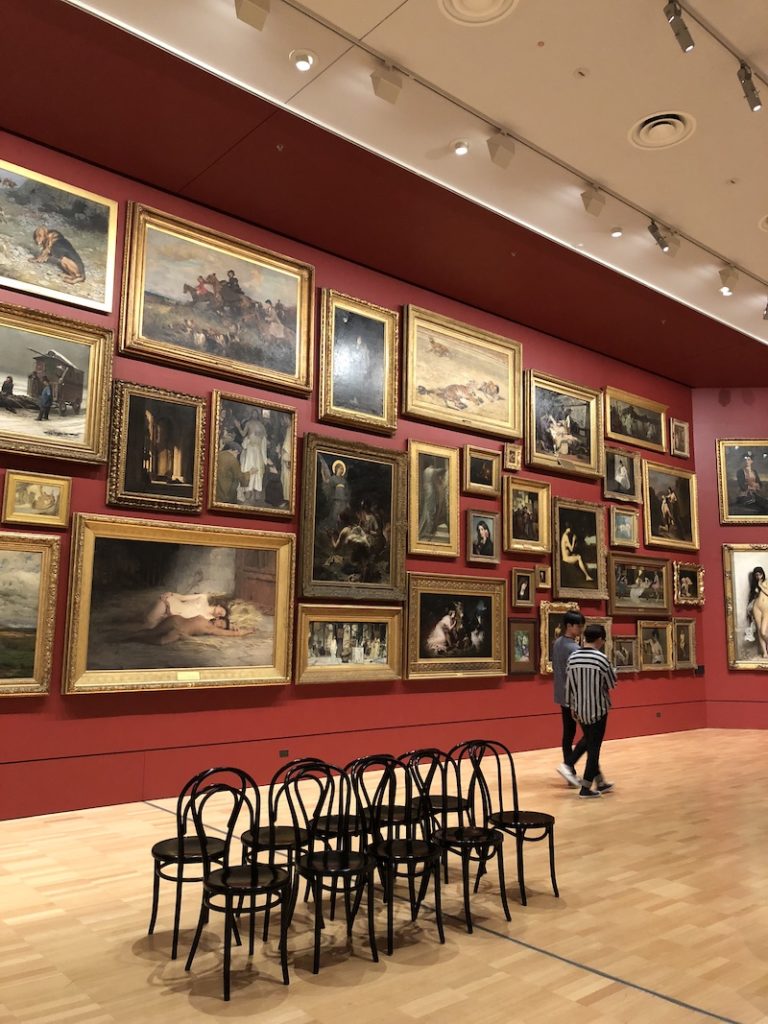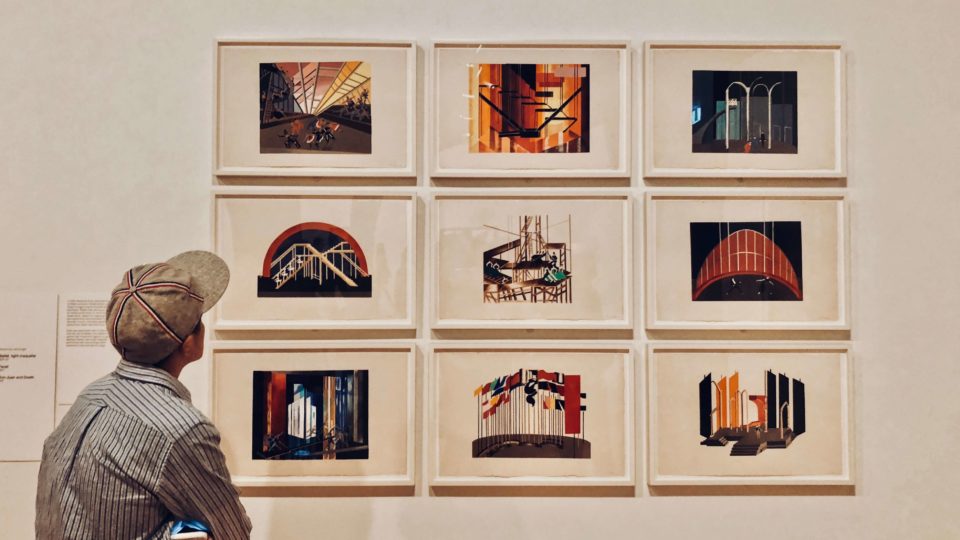The quiet atmosphere holds the artworks in place. Paintings of the Royal Family hang peacefully on display. Hushed conversations linger in the silence. Small, quick footsteps approach, loudened as two yelling toddlers suddenly burst into the room.
A man’s phone rings and he picks up with a loud “HELLO?” to drown out the screams. And thus the noise grows louder, the chaos builds, as the Queen sits on her throne, shooting a strong, disapproving glare.
We’ve all been there — the museum experience from hell.
Traditional to modernized, historical to contemporary, there is a great variety among what we now call art galleries or museums — from the conventionally quiet, like the Louvre in France, to the exciting and interactive, like the ArtScience Museum of Singapore.
But be it a hidden alleyway gallery, or a grand chateau with expensive pieces of treasure, art museums never stand without a proper set of rules. Rules that, as visitors, we are obliged to properly follow.
In whichever country we are, simple rules like “Don’t touch the artwork” or “No food and drinks allowed” are most likely the common courtesy. But spending time in galleries involves a lot more than just knowing not to bring a hot dog into the room.
There are several unwritten guidelines one should consider before and during an art gallery visit. Let’s unpack them.
1. Indoor Voices
Beyond just paintings and artworks of many different forms, what art galleries truly offer their visitors is solitude. Keeping voices down is the least one can do to respect that intention.
Different from a library, not all museums may require absolute silence, but one might be surprised at how easily a ringtone can ruin the experience of everyone in the room. Aside from keeping our audible tone at a minimum, it’s good to silence our phones and answer calls outside instead of in.
One doesn’t need to look that far to find art galleries that offer its visitors solitude — plenty of places in Southeast Asia keep their art in large, spacious rooms, where peace and quiet accompany them. The River Gallery in Yangon, for example, was named among the top 10 galleries to visit by Jacada Travel. There is also the National Museum of Singapore, with their exquisite art, sky-high ceilings, and very palatial halls.
2. Don’t stand too close to the artwork
The sign might say we couldn’t touch it, but it also doesn’t tell us to be “as close to it as we can possibly get.” Most artifacts or sculptures are rather fragile; it’s better to keep a safe distance from them if they aren’t glass-protected.
As for paintings, even though one often has the freedom to get as close as they want, we are likely to be blocking someone’s view if we’re only inches away from the canvas. For a closer look at those brushstrokes, Travis McElroy, host of a manners and etiquette podcast, suggests that we step forward, take a few seconds, and then go back. A good rule of thumb for what counts as “safe distance”? Simply make sure that the gap is enough to keep us from falling onto the artwork if we were to suddenly trip.

3. Respect personal space
When a particularly well-known piece is showcased, it often forms continuous crowds gazing at the artwork — especially when it’s peak season, and five different groups of tourists are crammed in one single art space.
In case this wasn’t mutually understood: One must never, ever shove to get to the front of the group. It’s an oil painting, not an A-list celebrity.
We can relax and have a little respect; it’s not going anywhere. Nobody will likely stare at a painting for 60 minutes straight, so learn to wait it out. When positioned at the back of the crowd, we can inch closer to the piece once the people in front of us start to disperse.
Outside of crowds, though, museums offer plenty of room; there is no reason to stand too close to a stranger while looking at the same artwork. Unless we’re striking up a conversation, it’s best to avoid making other people feel uncomfortable. The rule of thumb for this is: If we can hear them breathe, we are probably too close.
4. Do enough research
It’s a good idea to give the museum’s website a quick look prior to visiting. For instance, check the museum’s attire policies so you can dress accordingly. Being aware of the bag size rules beforehand will also save a lot of trouble. Hong Kong’s Sun Museum, for example, provides its full list of visiting policies and guidelines on its website, as many well-established galleries do.
Additionally, policies regarding cell phones and recordings should also be taken seriously. It wouldn’t hurt to make sure the museum does allow cameras before you plan to take your heavy DSLR.
If the house rules cannot be found online nor at the entrance, just find a staff member and ask them if your camera or bag is allowed. It only takes that extra bit of time to be polite and respectful towards the museum’s rules and regulations.
5. Reconsider taking your kids (hear us out)
There are plenty of game-filled, futuristic, or interactive spaces nowadays that are developed by modern museums — fun exhibitions like the DMZ Art Museum of Bali, or The Mind Museum in the Philippines. But be warned: Most art museums aren’t designed to be particularly child-friendly.
In this case, bringing hyperactive kids to see historical art collections indoors might prove to be harder for you. Seek alternatives before making your child spend hours in a place they don’t enjoy. But if a nanny or a playground aren’t an option, simply keep an eye on the nearest exit — just to be prepared in the case of a sudden tantrum (remember rule #1?).
6. Tuck your phone away — your Instagram can wait
In an article for Travel + Leisure, Mariah Tyler writes, “It’s pretty much impossible to experience an exhibit fully if you’re busy picking a filter and writing a caption.”
As tempting as it sounds to take a picture or video of everything in the room, the best and most rewarding way to enjoy an art museum is to actually look at the art. Social media can take away a lot of focus, and being a decent visitor is all about appreciating what has been presented. Da Vinci didn’t spend four years painting the Mona Lisa just to have it posted on a 24-hour Instagram Story.
Consider that maybe experiencing the museum with your own eyes would be far more enjoyable than through a phone screen. If something catches your attention, document it, and carry on. You can wait until you’re finished and have finally exited the museum to check messages or update friends about your recent visit.
And there is no need to take your followers journeying through the museum with you; upload selectively.

If you must take something, though, there should be no harm done from photographing the gallery’s exterior — many modern art spaces also showcase spectacular architecture and landscaping. The Fine Arts Museum of Ho Chi Minh City, for example, takes the form of a picturesque, bright yellow manor, and is named the second major art museum in the country. Consider also the Ne’-Na Art Space of Thailand, a contemporary, green, open space which invites you to admire art in the midst of nature itself.
It’s worth being aware that people aren’t usually fond of tourists, but they’re even less fond of those who disregard proper etiquette. As a patron or a guest, it’s only fair to treat the museum you’re visiting in your travels with high regard. This means reading the scene of a room before entering it, and conducting yourself appropriately.
So whether you’re walking in alone, or with a massive group of people, everyone can benefit from a good sense of simple manners. One will find that works of art deserve to be fully cherished and admired, that a museum can offer plenty of knowledge to discover, and that there are always plenty of things to do than simply taking selfies.
And, no — not with a selfie stick.
See also…
Best museums in Jakarta: Where to find exhibitions on history, art, finance, crafts, and textiles
Yangon Gallery Hopping: Where to see classical paintings, unusual sculptures, modern art, and more




